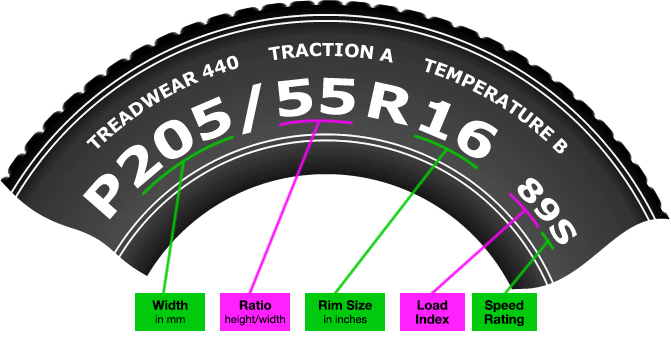Home / Understanding Truck Tires: Load Ratings and Sizes
Your truck’s tire specs give you more information than you realize in the alpha-numeric code on the side. Learn to read and understand what these letters and numbers mean for your tires’ truck load index, speed rating and size. Understanding these values will make you a better consumer when choosing tires for your truck.
For help selecting which truck body is right for your needs, click here to see all of Reading’s truck bodies.
If you take a close look at a tire, you will find a large amount of information. Everything from the manufacturer’s name to the tire size and load rating appears on the sidewall. Interpreting these numbers requires you to know what values to look for and their meanings.
On the sidewall, you will find the tire’s type, the width, aspect ratio, construction, wheel rating, load index and speed rating. You can identify the values based on their position relative to each other and how many numbers or letters they have. The Tire and Rim Association standardizes these values for all American tire manufacturers.
Some tires may also have Uniform Tire Quality Grading, UTQG, which refers to information for traction and temperature grades. AA traction grades perform best in wet conditions, and the classes go down in performance — AA, A, B and C. Temperature categories refer to how well the tires dissipate heat at various speeds. Those rated with A perform well at speeds over 115 mph. B-rated tires operate best between 100 mph and 115 mph, while C tires remove heat best at speeds between 85 mph and 100 mph.
The first part to look for is the string of letters and numbers that may start with P, LT or no letter. For example, P235/75R15 or LT215/65R15. Manufacturers put a lot of information into this alpha-numeric code — the tire type, width, aspect ratio, construction and tire diameter.
Next to this extended code, you will also see the load index and speed rating, both of which you must know to find the right tires for your loaded work truck.
To make the most of this information, you need to understand what the tire size information means as well as the load ratings and speed information.
The tire size typically starts with a letter indicating the type and ends with a two-digit number, giving the rim size. Between these parts, you will see additional information about the tire size and construction.
The first letter represents the type of vehicle you should install the tire on. P indicates a passenger vehicle or light-duty truck. Generally, these tires require lower pressures than other tires. LT designates a light-duty truck, but these often accompany larger 3/4 and one-ton pickups. If there is not a letter at the beginning, the tire is a Euro-Metric tire, usually used on passenger vehicles.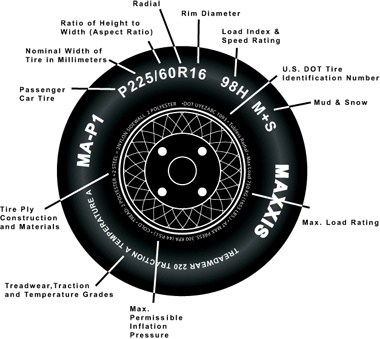 In the example P235/75R15, the P means this tire fits onto a passenger vehicle.
In the example P235/75R15, the P means this tire fits onto a passenger vehicle.
Look at the three numbers after the letter or the first three numbers in front of a slash mark if your tire does not have a letter at the beginning. These numbers give the measurement of the tire’s width from sidewall to sidewall in millimeters. Most tire measurements come from the metric system, regardless of the company making the tires. The example of P235/75R15 has a width of 235 millimeters between sidewalls.
After the slash mark, you will see a two-digit number. This value refers to the aspect ratio, which is the percentage of the sidewall’s height to its width. In the example tire, P235/75R15, the 75 is the aspect ratio. This tire’s sidewall height measures 75% of the width of the sidewall.
Following the aspect ratio, you will see one of three letters — R, B or D. This letter tells you about the tire’s construction. An R designates radial tires, which have their internal cords laid at 90-degree angles to the tire’s centerline.
An R designates radial tires, which have their internal cords laid at 90-degree angles to the tire’s centerline.
Bias-ply tires have a D in this position to indicate their diagonal design. On these types of tires, the cords cross each other at 30 to 45-degree angles. While once common early in the 20th century, bias-ply tires no longer dominate the market. They have been replaced by longer-lasting, more comfortable radial tires.
Belted tires have a B to designate their format. These tires mix the diagonal design of bias-ply with added belts inside the construction. While rare, these have applications on some off-road trucks, trailers and antique vehicles.
For the example used, P235/75R15, the R means its construction is radial.
While the sidewall width uses millimeters, the wheel diameter, the last digits after the construction letter, comes in inches. The larger the number here, the larger the wheel size. If you replace your rims, you will also need to change the tires to fit.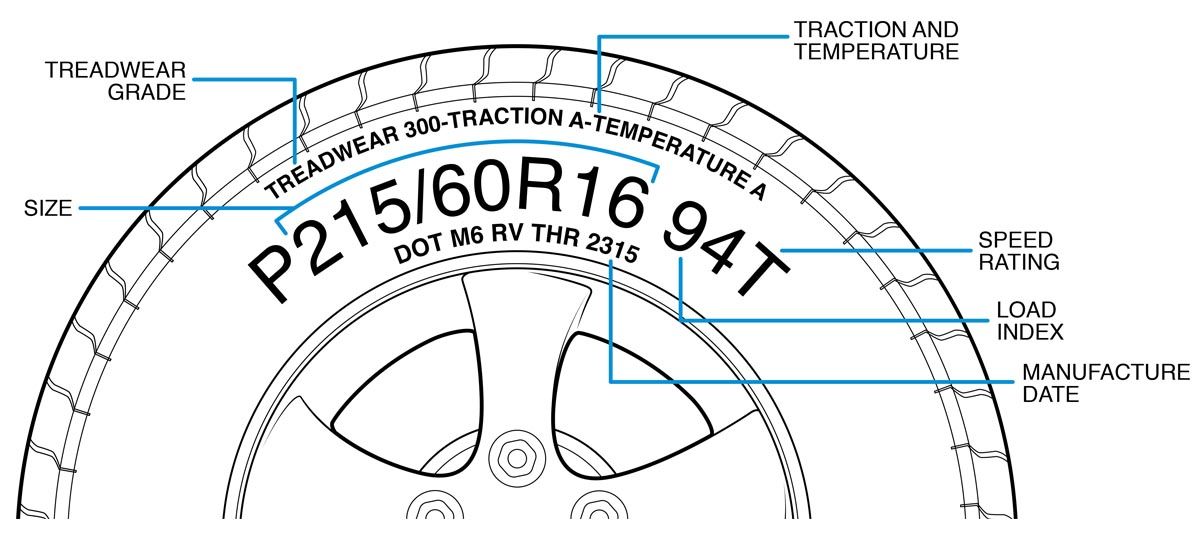 Be careful when changing wheel sizes because larger wheels affect the handling of the vehicle.
Be careful when changing wheel sizes because larger wheels affect the handling of the vehicle.
In the example tire, P235/75R15, the 15 at the end means you must install it on a 15-inch diameter wheel.
Following the size information, you will see two numbers and a letter. The numbers give the load rating for the tire, while the letter indicates the speed rating.
Using P215/65R15 85H as an example, the 85 gives the load index, also called the tire ply rating, and the H is for the speed rating, which tells you the maximum speed at which you should use the tires. This speed ranges from 3 mph to 186 mph.
Often, you will see a number and letter following the tire size. This set of information denotes the tire load and speed rating. On some tires, you may see three letters instead of one. The first gives the speed rating while the next two indicate the load range.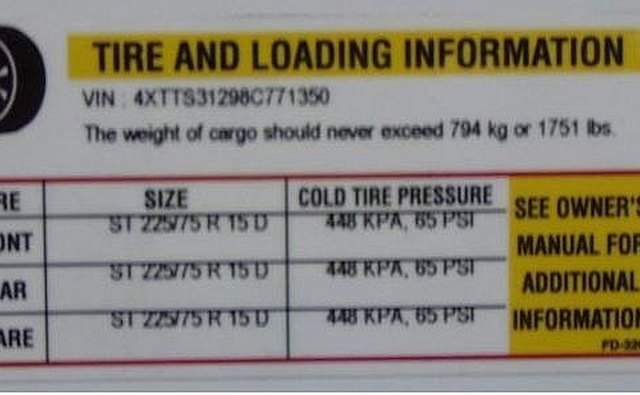
1. Tire Load Range and Tire Ply Rating
The tire load range is also known as ply rating — a term that dates back to the days of bias-ply tires, which had different numbers of ply layers. More layers indicated a better and stronger tire. Today, ply rating still refers to the strength of the tire, but since fewer, stronger plies are used, the numbers have been replaced by load range letters.
The load ranges for passenger tires have a listing beneath the tire code with information about the maximum load range and tire pressures. The load range indicates the heaviest load the tire can handle in pounds. Maximum tire pressure indicates the highest you can inflate the tires, but do not fill your tires to this pressure. It reflects the highest pressure the tire can handle when carrying its maximum load. Use the pressure given in your vehicle’s owner’s manual for the ideal tire pressure that creates the most comfortable and safest ride.
Light truck load ranges have letters B, C, D, E and F, and they have increasing maximum pressures. The lowest pressure is for B tires with 35 psi, and C has a pressure of 50 psi. The pressures increase in increments of 15 from 65 psi, 80 psi and 95 psi for tires with load ranges of D, E and F. For work trucks, the most common load ranges are C, D and E. Commercial trucks, which have much higher carrying requirements, have load ranges from F through L.
The lowest pressure is for B tires with 35 psi, and C has a pressure of 50 psi. The pressures increase in increments of 15 from 65 psi, 80 psi and 95 psi for tires with load ranges of D, E and F. For work trucks, the most common load ranges are C, D and E. Commercial trucks, which have much higher carrying requirements, have load ranges from F through L.
In some cases, you may see a number after the load range number, for example, C1 or C2. They still have the same number of plies, but the numbers designate differing max pressures.
If you see a pair of load ratings, the tire manufacturer did not make a mistake. Instead, these LT tires have the load ratings for dual tires. The first number gives the load index for the tires when used on single axles. The second number is how much the tire can handle when used on a dual axle.
For instance, if you see a 104/101 for the load index, this means the tire has an index of 104 when used by itself but only 101 when installed on a dual-tire axle.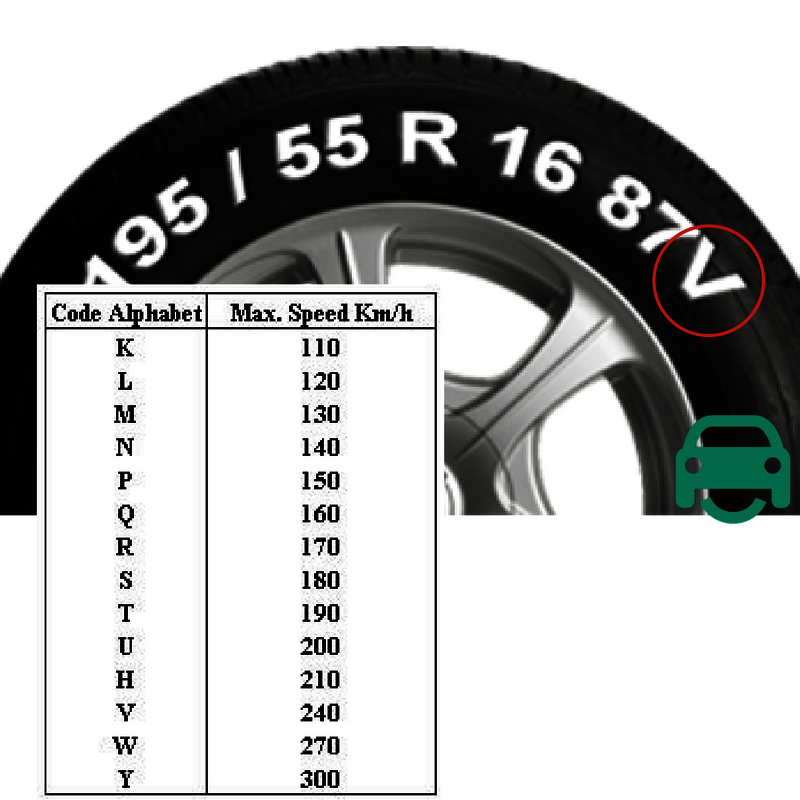 The second number is usually lower because of unequal load sharing when the tires are paired together. However, when the tire is acting by itself, it can support a higher weight.
The second number is usually lower because of unequal load sharing when the tires are paired together. However, when the tire is acting by itself, it can support a higher weight.
The load index on a tire gives a numerical value for the maximum weight the tire can handle when it is inflated to its recommended pressure. Higher numbers correlate to the tire’s ability to bear heavier loads. Indices start at 1, which can carry 102 pounds, and they go up to 150, which can hold up 7,385 pounds. In the example, P215/65R15 85H, the 85 load index means the tire can carry up to 1,135 pounds.
Like truck tire load ratings, the higher the load index, the more robust the tire is. Higher load indices correspond to tires used for hauling cargo or for installation on work trucks. No matter how strong the tire is, though, it’s important to remember to never carry weights that are heavier than your tires or vehicle’s suspension are rated for.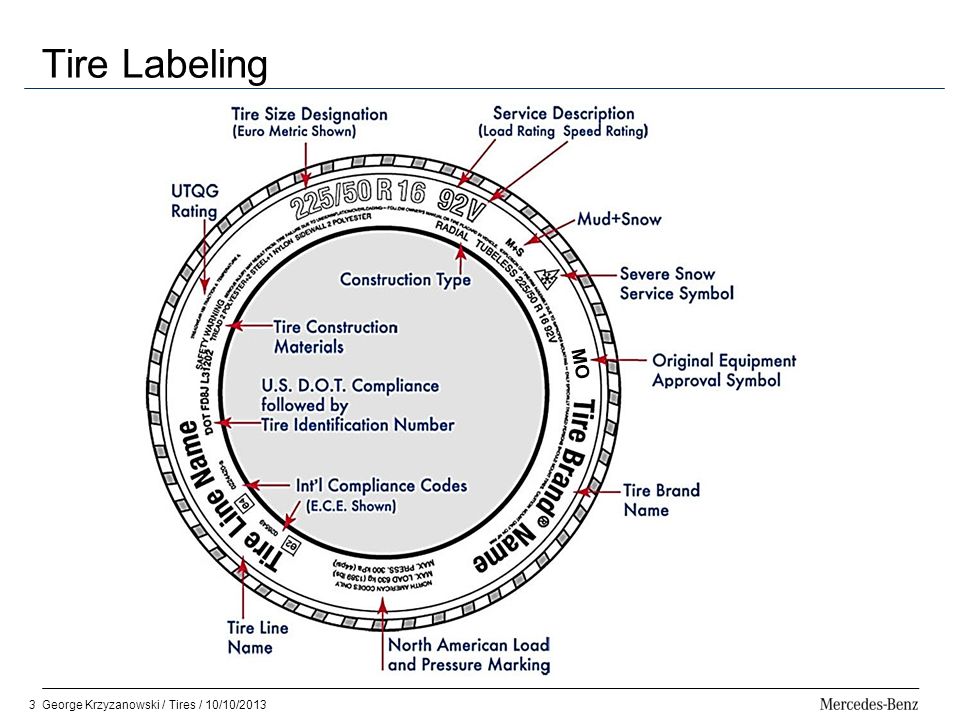
In addition to load ranges and indices, you also need to know about the speed ratings to keep your truck and cargo safe and to avoid damaging your tires. Just as tires have load indices to limit the amount they carry, they also have ratings for their maximum speeds. In the United States, most speed ratings on tires surpass the limits on highways. You should never exceed the posted speeds, regardless of the ability of your tires. Nor should you drive your truck faster than the tires’ speed ratings.
The speed rating has a designation after the load index number and before the load range letter if present. The lowest speed for tires is 75 mph for L rated tires. Only use these for off-road trucks that cannot reach high speeds due to the rough conditions. Keep in mind that speed ratings do not correlate alphabetically. See the speed ratings for various tires listed below and their standard vehicles:


Typically, for work trucks, speed is not the most critical factor, which explains why a speed rating of R for heavy-duty trucks has a limit of only 106 mph. Those who drive sports cars or race usually require specialty tires built for speed. If you need to haul cargo, look for the load index or range, which will help you to identify the best tires for your operation.
In the example tire, P215/65R15 85H, the H indicates the speed index of up to 130 mph.
When you install tires onto your truck, choose tire sizes and load ratings recommended by the manufacturer. However, the size and strength of your tires you need for your vehicle will change if you customize it by adding on service bodies, platforms, tow hooks or other features. Ask us about the recommended chassis and tire loads needed for such additions to your truck. By pairing the right tires with your customized work truck, you will ensure peak productivity from the vehicle.
Ask us about the recommended chassis and tire loads needed for such additions to your truck. By pairing the right tires with your customized work truck, you will ensure peak productivity from the vehicle.
The tires you install on your truck are only one part of customizing your vehicle to your job. Service bodies and similar add-ons transform your purchased vehicle into a work machine. In fact, if you have a service body on your truck, you may need higher rated tires to hold up the extra weight you carry.
Find the service bodies and other ways to customize your truck to perform best at what you do by checking out our products at Reading Truck. If you have questions about the best options or want to create a customized work truck, contact us today.
Never exceed a tire’s maximum load rating (the limit that is molded into the tire sidewall) or the maximum vehicle load limit shown on the vehicle tire placard, whichever is less.
Photo: Work Truck
Editor's Note: Check out the updated version of this article, including Q&A from readers, here.
Paying attention to a replacement truck tire’s load rating is critical. The tire must be able to safely support a given amount of vehicle weight. If the tire’s load rating is insufficient, the tire may become overheated and can self-destruct.
For example, if a passenger car performance tire is selected to replace an original equipment light work truck tire on an SUV, the new tire must meet or exceed the requirement for the specific vehicle weight.
But, what is a tire load rating? What tire load rating do you need? And how do you determine tire load capacity? Check out these tips!
Do you know how to determine a truck tire's load capacity? To roughly determine the tire load range capacity for each individual truck tire, take the vehicle’s gross vehicle weight (or GVW) and divide by four. If the vehicle gross weight is 4,500 pounds, each tire should be able to safely support at least 1,125 pounds.
If the vehicle gross weight is 4,500 pounds, each tire should be able to safely support at least 1,125 pounds.
However, the gross vehicle weight does not take the additional load, such as the weight of the driver, into account. So, you should never select a truck tire that only meets this minimum weight capability.
Always select a truck tire that offers a greater, or “reserve,” tire load capacity, which will help the vehicle handle and respond to higher-stress emergency situations when loaded.
How are truck tires rated? The tire’s load rating, or “max load,” indicates the individual tire’s safe maximum load-carrying capacity when inflated to its recommended pressure.
Never exceed a truck tire’s maximum load rating (the limit that is molded into the tire sidewall) or the maximum vehicle load limit shown on the vehicle tire placard, whichever is less. The tire is designed and constructed to handle a specific maximum load, and overloading will result in a buildup of excessive heat in the tire, which could lead to tire failure.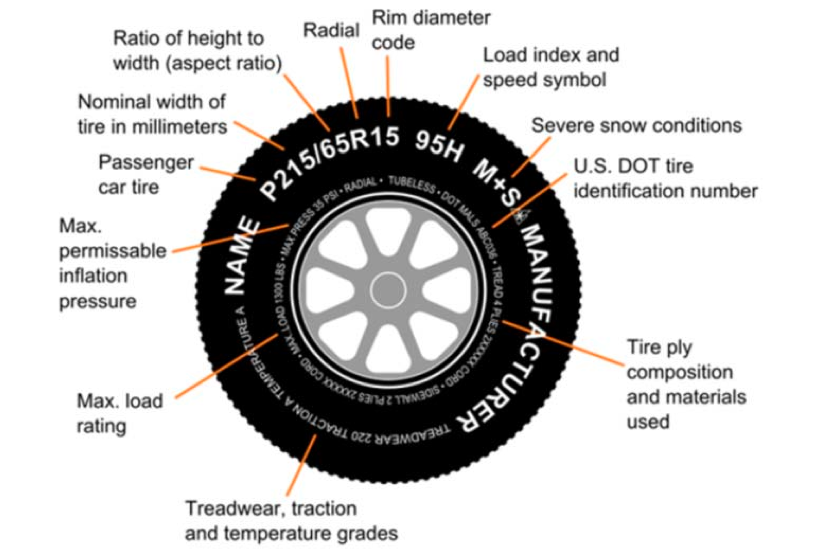
The tire load index rating number, which appears on the tire sidewall, is an assigned number that corresponds to the tire’s load-carrying capacity. Alphanumeric tires will display an alpha code that indicates maximum load. The letter can range from “A” to “N” (the higher the letter, the greater the load-carrying capacity at a given inflation tire pressure).
The max load and maximum inflation numbers found on the tire sidewall indicate the maximum load that can safely be carried and the maximum allowable tire pressure. The construction of the truck tire (belts, bead, carcass, liner) dictates the tire’s ability to withstand pressure. The stronger the reinforcements, the greater pressure the tire can hold.
Most alphanumeric tires feature a load range of B, which indicates that they are restricted to the load that can be carried at a maximum inflation pressure of 32 psi.
Photo courtesy of Flanker, Own Work, CC By 3.0.
Most alphanumeric tires feature a load range of B, which indicates that they are restricted to the load that can be carried at a maximum inflation pressure of 32 psi.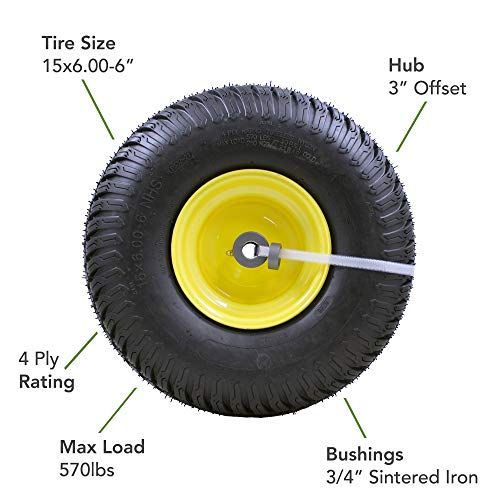
Note:
The tire load-carrying capacity of P-metric tires is rated as either Standard or Extra Load. Standard Load tires are limited by the load that can be supported with a maximum inflation pressure of 35 psi. Extra Load-rated tires are limited to the load that can be carried at a maximum inflation pressure of 41 psi.
Generally, a Standard Load tire will not feature a special designation mark, while Extra Load truck tires will feature an “Extra Load” marking.
Extra Load tires will be branded as “Extra Load” and may be identified by an “XL” (for example LT245/75R15 XL).
It’s important to note that a Standard Load tire (with a normal inflation pressure recommendation of 35 psi) may be marked with a maximum inflation pressure of 44 psi. This does not indicate an increase in the truck tire’s load-carrying capacity, but indicates the tire’s ability to handle higher inflation pressure to accommodate special performance requirements.
Typically, the tire load rating index of a passenger car tire and light work truck tire ranges from 70 to 110. A speed-rated tire’s sidewall markings will indicate size, followed by the tire load rating index and the speed rating.
Last updated: October 5, 2022
Load index (it is also the index of carrying capacity or bearing capacity) - this is the name of the maximum allowable weight, under the pressure of which the tire is able to function normally. This indicator is especially important for owners of trucks, since the weight of their cars is constantly changing and can reach huge values.
To increase the load index, tire manufacturers are using stronger materials and reinforcing the roll. Rubber becomes more stable, but its rigidity inevitably increases. This means that the higher the load index, the less comfortable the ride will be. Hard rubber not only absorbs worse, but also creates a rumble while driving. The only way to make driving a car more comfortable is to take tires with a lower load index. In this case, the owner will no longer be able to transport the previous amount of cargo, but the car will move more smoothly, and the pressure on the suspension will decrease.
The only way to make driving a car more comfortable is to take tires with a lower load index. In this case, the owner will no longer be able to transport the previous amount of cargo, but the car will move more smoothly, and the pressure on the suspension will decrease.
In order to avoid confusion, global tire manufacturers use a single index table in the manufacture of tires. The smallest load index among the existing ones is 0. It corresponds to an indicator of 45 kilograms. This means that a tire with this index is able to withstand loads up to 45 kilograms. The maximum index is 230 with a corresponding figure of 33,500 kilograms.
These figures represent optimal values, not limit values. For example, if the load index of a tire corresponds to five hundred kilograms, then this does not mean that with a load of 600 kg the tire will be torn apart. From time to time it is permissible to exceed the recommended load by twenty to thirty percent. But when buying tires, you should focus on the recommended value, which, along with the speed index, is indicated in the technical documents of any car.
But when buying tires, you should focus on the recommended value, which, along with the speed index, is indicated in the technical documents of any car.
The load index is not the only indicator by which one can judge the bearing capacity of a tire. There is also the concept of ply rating or PR (from the English “ply rating”). The higher this figure, the greater the load the tire can withstand. For example, for passenger cars, the ply rate is in the range from 4 to 6 PR, and tires with a PR value of 6-8 are usually installed on minibuses or small trucks. For large-sized vehicles, like agricultural machinery, tires marked "Reinforced" (literally - "reinforced") or XL are used. This tire has the maximum ply and is able to withstand the heaviest loads. An alternative option is the sign "C", that is, "commercial". It is put on tires for vehicles with a large load capacity.
And yet, the ply rate, as an indicator of the optimal load, is imperfect.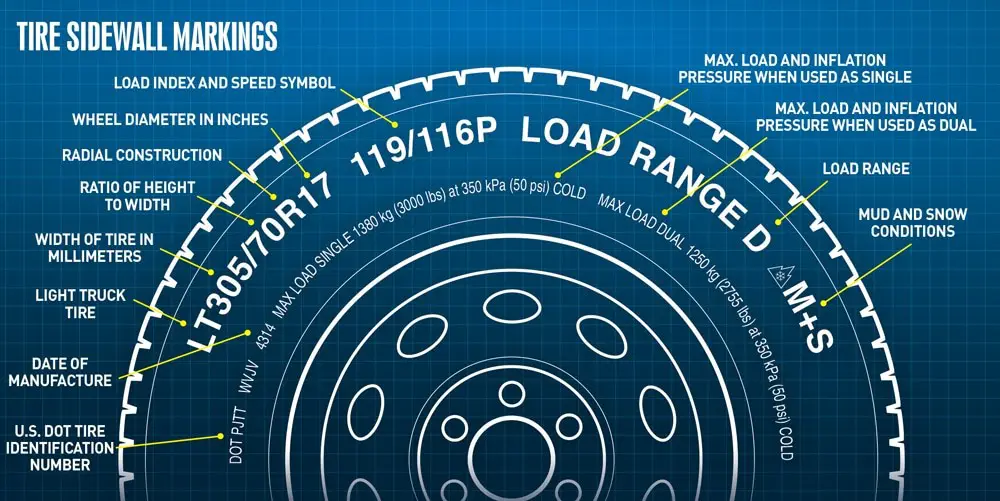 Tires of different sizes with the same ply rating are able to withstand completely different loads, so ply rating is not an independent indicator. Today, tire manufacturers use it less and less and indicate the load-bearing capacity on the sidewall.
Tires of different sizes with the same ply rating are able to withstand completely different loads, so ply rating is not an independent indicator. Today, tire manufacturers use it less and less and indicate the load-bearing capacity on the sidewall.
Sometimes, in addition to the load index, the manufacturer indicates the maximum permissible load in kilograms. To recognize it, you need to find the inscription “max. load" followed by a number.
It is important to note that the limit load rating is always per tire. To calculate the coefficient for a car, you need to multiply the value by four.
The bearing capacity coefficient is related to the speed index discussed at the beginning. For example, the 80R marking means that the recommended speed for the tire is 170 km / h, and the maximum load is 450 kilograms. But after all, the load on the tire is directly proportional to the speed: the faster the car moves, the higher the load on the tire.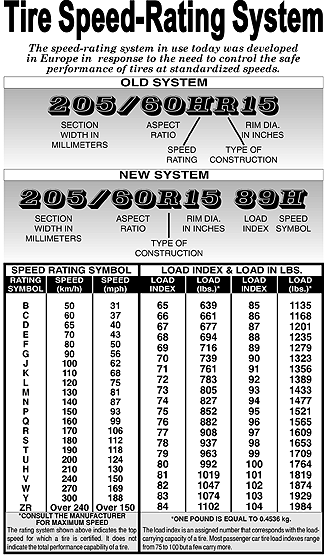 To avoid confusion, on each tire, manufacturers indicate the load factor for the maximum allowable speed. In the example above, a load of up to 450 kilograms would be allowed at a speed of 170 km/h. If you go slower, then you can take more cargo. The reverse is also true: if the pressure on the wheels is reduced, the recommended speed limit can be exceeded. There is a formula: five percent weight reduction allows you to increase the maximum speed by 10 kilometers per hour.
To avoid confusion, on each tire, manufacturers indicate the load factor for the maximum allowable speed. In the example above, a load of up to 450 kilograms would be allowed at a speed of 170 km/h. If you go slower, then you can take more cargo. The reverse is also true: if the pressure on the wheels is reduced, the recommended speed limit can be exceeded. There is a formula: five percent weight reduction allows you to increase the maximum speed by 10 kilometers per hour.
All technical information about the tire is printed on its sidewalls. The name of the manufacturer, model, type of cord, country of manufacture and other data are noted there. Among other information, there is always a block of information on the sidewall, which is called the standard size. Let's take size 185/75R14 82S as an example. Here 185 is the width of the tire in millimeters, 75 is the height in millimeters, R is the type of tire (in this case, radial, but can also be diagonal and denoted by the letter D or diagonally belted and denoted by the letter B), 14 is the rim diameter in inches, 82 - load index (475 kilograms), S - speed index (180 km / h).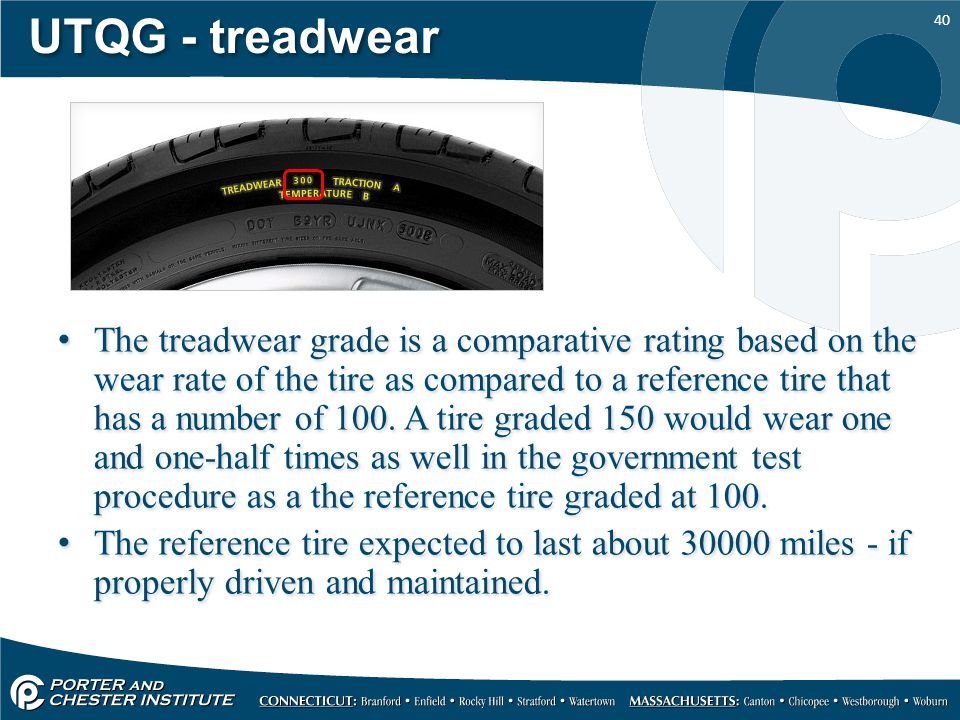
Twin tires are sometimes used for large trucks. The limit load coefficient for each tire in a pair may vary, and in this case, the load index is indicated for each tire separately, through a fraction.
(in - load index, kg - weight in kilograms)
Tire load index - a conventional numerical designation that shows what mass load the tire can withstand in long-term operation. This information is necessary in order to choose the right tires, and thus ensure a safe and comfortable ride on the car. To decipher the tire load index, a table is used, which shows the numerical designations of the index and the normal values \u200b\u200bof the mass that corresponds to them.
Load value (MAX LOAD) and tire pressure
Next, we will give you such a table, and also give information about speed index , which is also important when choosing a tire.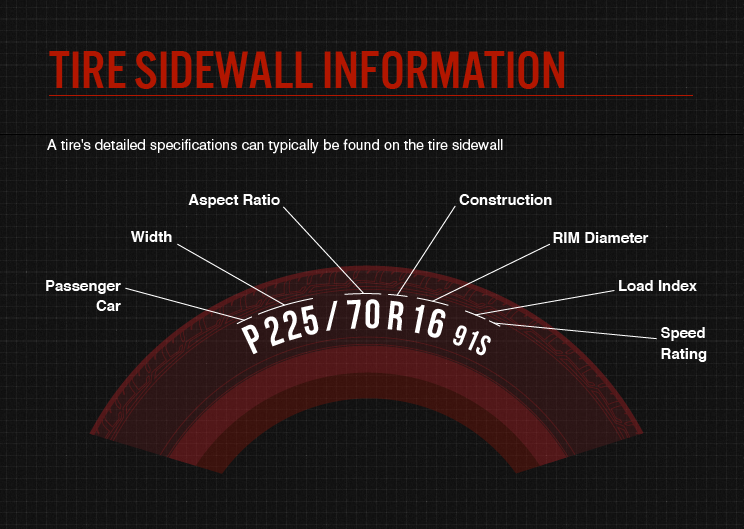 You can read the rest of the information about the designations available on the tires in addition.
You can read the rest of the information about the designations available on the tires in addition.
First of all, it must be remembered that the numerical values of the load index given on tires are conditional ! That is, these numbers do not mean the absolute maximum weight for which the tire is designed. As the load index increases, the maximum allowable weight of the machine for which it is designed also increases.
However, in practical terms, when buying new tires, many drivers are interested in a simple question - which tire load index should I choose in this or that case? It is easy to answer it. There are two options. The first is to ask for relevant information in the manual for your car or in the reference literature. Many automakers directly indicate the information that a particular model needs a tire with such and such a load index (the same applies to the speed index, although selection is easier there, but more on that later). The second option is to do the calculations yourself.
The second option is to do the calculations yourself.
Passenger car load index can be calculated based on the empty weight of the car with the maximum load. That is, to the mass of the equipped vehicle (with a fully filled fuel tank, process fluids, repair kit, spare wheel, and so on), the mass of the maximum number of people placed in it is added (for passenger cars it is usually 5), as well as some mass additional cargo (here it all depends on the specific car, for small cars it can be 100 ... 200 kg, and for SUVs - over 500 kg). Approximate value of indices for different types of cars:
The resulting maximum weight must then be divided by four (for conventional four-wheel machines). And after that add 35...40% of the stock. Having carried out such simple calculations, you will get the absolute value in kilograms that the tire must withstand. The final stage is the choice of a symbol for the load index of the machine according to the table. Note that the factor corresponding to the nearest HIGHEST absolute value of must be selected.
And after that add 35...40% of the stock. Having carried out such simple calculations, you will get the absolute value in kilograms that the tire must withstand. The final stage is the choice of a symbol for the load index of the machine according to the table. Note that the factor corresponding to the nearest HIGHEST absolute value of must be selected.
In order not to bother with the calculations of the load index required for the tires of your car, it is possible to quickly calculate everything on a special calculator. It will immediately give you the required number.
Often there are already several options in stores for specific car models, from which you can choose the most suitable one for you in terms of quality, price and manufacturer.
It is important to stock for rear wheels , especially if you often carry heavy loads. However, do not be zealous and choose tires with an index that is too high. The fact is that the more load the tire is designed for, the more rubber is used for its manufacture.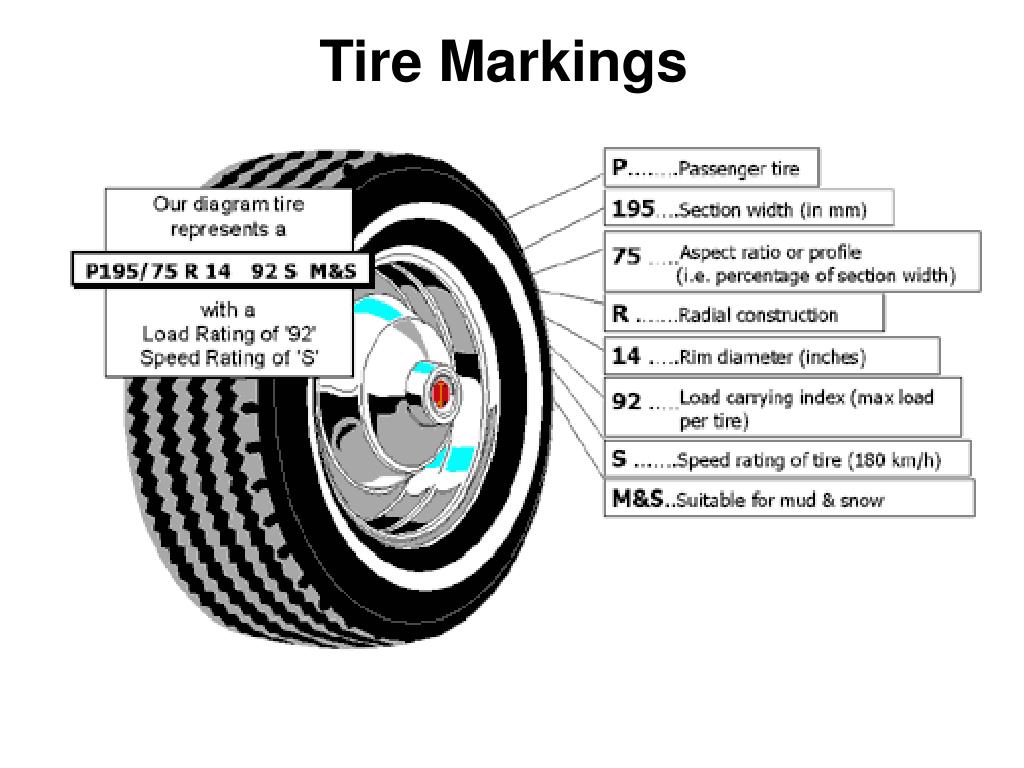 Accordingly, such a tire will be heavier, and hence there are three negative factors .
Accordingly, such a tire will be heavier, and hence there are three negative factors .
First, the engine will be forced to expend extra effort (and hence fuel!) to turn the heavy wheel. The second is that a heavy tire will be very stiff, so it will be uncomfortable to ride on it. The third - with heavy tires, the suspension of the car experiences an additional load, which means that its normal operation period is reduced.
Next, we give you the promised table that will help you decipher the tire load index (here you will find tire values \u200b\u200bfor all types of cars - cars, SUVs, trucks, and so on). For cars and SUVs, tires with an index value from 60 to 125 are used (respectively, from “A” class cars to heavy SUVs).
| Load index | Maximum weight, kg | |||||||||||||||||||||
| 5 | 51,5 | 105 | 925 | |||||||||||||||||||
| 6 | 53 | 106 | 950 | |||||||||||||||||||
| 7 | 54,5 | 107 | 975 | |||||||||||||||||||
| 8 | 56 | 108 | 1000 | |||||||||||||||||||
| 9 | 58 | 109 | 1030 | |||||||||||||||||||
| 10 | 60 | 110 | 1060 | |||||||||||||||||||
| 11 | 61,5 | 111 | 1090 | |||||||||||||||||||
| 12 | 63 | 112 | 1120 | |||||||||||||||||||
| 13 | 65 | 113 | 1150 | |||||||||||||||||||
| 14 | 67 | 114 | 1180 | |||||||||||||||||||
| 15 | 69 | 115 | 1215 | |||||||||||||||||||
| 16 | 71 | 5 | 5 | 5 | 5 | 5 | 5 | 5 | 5 90EALLE0099 117 | 1285 | ||||||||||||
| 18 | 75 | 118 | 1320 | |||||||||||||||||||
| 19 | 77,5 | 119 | 1360 | |||||||||||||||||||
| 20 | 80 | 120 | 1400 | |||||||||||||||||||
| 21 | 82.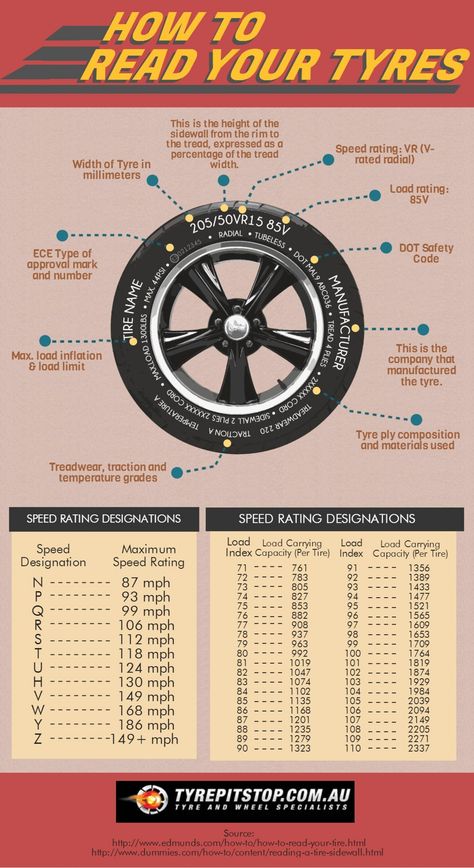 5 5 | 121 | 1450 | |||||||||||||||||||
| 22 | 85 | 122 | 9015 901523.25.25.25.25.25.25.25.25.25.25.25.25.25.25.25.25.25.25.25.25.25.25.25.25.25.25.25.25.25.25.25.25.25.25 90EALLY 901.5 23.25.25.25.25.3AL0102 | 1550 | ||||||||||||||||||
| 24 | 90 | 124 | 1600 | |||||||||||||||||||
| 25 | 92,5 | 125 | 1650 | |||||||||||||||||||
| 26 | 95 | 126 | 1700 | |||||||||||||||||||
| 27 | 97 | 127 | 1750 | |||||||||||||||||||
| 28 | 100 | 128 | 1800 | |||||||||||||||||||
| 29 | 29 | 1850|||||||||||||||||||||
| 30 | 106 | 130 | 1900 | |||||||||||||||||||
| 31 | 109 | 131 | 1950 | |||||||||||||||||||
| 32 | 112 | 132 | 2000 | |||||||||||||||||||
| 33 | 115 | 133 | 2060 | |||||||||||||||||||
| 34 | 118 | 134 | 2120 | |||||||||||||||||||
| 121 | 15||||||||||||||||||||||
| 36 | 125 | 136 | 2240 | |||||||||||||||||||
| 37 | 128 | 137 | 2300 | |||||||||||||||||||
| 38 | 132 | 138 | 2360 | |||||||||||||||||||
| 39 | 136 | 139 | 2430 | |||||||||||||||||||
| 40 | 140 | 140 | 2500 | |||||||||||||||||||
| 41 | 141 | 2575 | 42 | 150 | 142 | 2650 | ||||||||||||||||
| 43 | 155 | 143 | 2725 | |||||||||||||||||||
| 44 | 160 | 144 | 2800 | |||||||||||||||||||
| 45 | 165 | 145 | 2900 | |||||||||||||||||||
| 46 | 170 | 146 | 3000 | |||||||||||||||||||
| 47 | 147 02 | 180 | 148 | 3150 | ||||||||||||||||||
| 49 | 185 | 149 | 3250 | |||||||||||||||||||
| 50 | 190 | 150 | 3350 | |||||||||||||||||||
| 51 | 195 | 151 | 3450 | |||||||||||||||||||
| 52 | 200999 | 152 | 3550 | |||||||||||||||||||
| 206 | 153 | 3650 | ||||||||||||||||||||
| 5 | 9015 5 5 5 5 5 | 154 | 3750 | |||||||||||||||||||
| 55 | 218 | 155 | 3875 | |||||||||||||||||||
| 56 | 224 | 156 | 4000 | |||||||||||||||||||
| 57 | 230 | 157 | 4125 | |||||||||||||||||||
| 58 | 236 | 158 | 4250 | |||||||||||||||||||
| 243 | 4375 9010 9015 9015 9015 | |||||||||||||||||||||
| 4500 | ||||||||||||||||||||||
| 61 | 257 | 161 | 4625 | |||||||||||||||||||
| 62 | 265 | 162 | 4750 | |||||||||||||||||||
| 63 | 272 | 163 | 4875 | |||||||||||||||||||
| 64 | 280 | 164 | 5000 | |||||||||||||||||||
| 65 | 290 | 165 | 5150 | |||||||||||||||||||
| 66 | 9009 665300 | |||||||||||||||||||||
| 67 | 307 | 167 | 5450 | |||||||||||||||||||
| 68 | 315 | 168 | 5600 | |||||||||||||||||||
| 69 | 325 | 169 | 5800 | |||||||||||||||||||
| 70 | 335 | 170 | 6000 | |||||||||||||||||||
| 71 | 345 | 171 | 6150 | |||||||||||||||||||
| 72 | ||||||||||||||||||||||
| 73 | 365 | 173 | 6500 | |||||||||||||||||||
| 74 | 375 | 174 | 6700 | |||||||||||||||||||
| 75 | 387 | 175 | 6900 | |||||||||||||||||||
| 76 | 400 | 176 | 7100 | |||||||||||||||||||
| 77 | 412 | 177 | 7300 | |||||||||||||||||||
| 0115 | ||||||||||||||||||||||
| 79 | 437 | 179 | 7750 | |||||||||||||||||||
| 80 | 450 | 180 | 8000 | |||||||||||||||||||
| 81 | 462 | 181 | 8250 | |||||||||||||||||||
| 82 | 475 | 182 | 8500 | |||||||||||||||||||
| 83 | 487 | 183 | 8750 | |||||||||||||||||||
| 84 | 08 | 85 | 515 | 185 | 9250 | |||||||||||||||||
| 86 | 530 | 186 | 9500 | |||||||||||||||||||
| 87 | 545 | 187 | 9750 | |||||||||||||||||||
| 88 | 560 | 188 | 10000 | |||||||||||||||||||
| 89 | 580 | 189 | 10300 | |||||||||||||||||||
| 90 | 1909 | 10600 | 615 | 191 | 10900 | |||||||||||||||||
| 92 | 630 | 192 | 11200 | |||||||||||||||||||
| 93 | 650 | 193 | 11500 | |||||||||||||||||||
| 94 | 670 | 194 | 11800 | |||||||||||||||||||
| 690 | 195 | 12150 | ||||||||||||||||||||
| 96 | 2S or 88T, which will just be the combined designation of the two mentioned indices.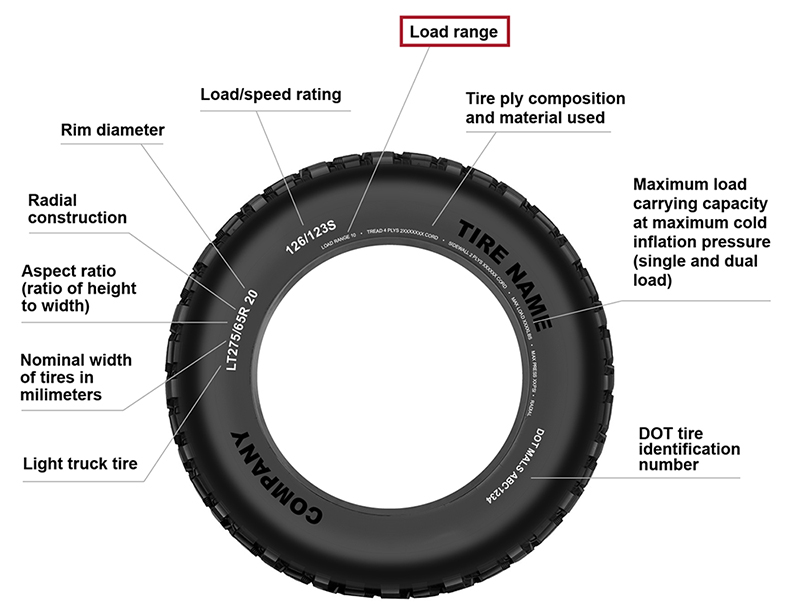 The speed index is specially placed next to the load index. This information gives an idea. what kind of load can the tire withstand at its maximum speed. Deciphering the tire speed index is very simple. The closer the letter is to the end of the alphabet, the more speed the tire is designed for. The only exception is the letter H, located between U and V. So, we give you a similar table with which you can clarify what maximum speed this or that tire is designed for. | |||||||||||||||||||||
| K | 110 | |||||||||||||||||||||
| L | 120 | |||||||||||||||||||||
| M | 130 | |||||||||||||||||||||
| N | 140 | |||||||||||||||||||||
| P | 150 | |||||||||||||||||||||
| Q | 160 | |||||||||||||||||||||
| R | 170 | |||||||||||||||||||||
| S | 180 | |||||||||||||||||||||
| T | 190 | |||||||||||||||||||||
| U | 9015||||||||||||||||||||||
| H | H | H | H | H | H | H | H | H | H | H | H | H | H | H | H | H | H | H | H | H.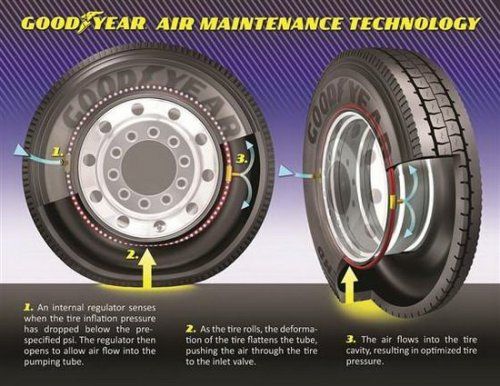 0098 0098 | V | 240 |
| W | 270 | |||||||||||||||||||||
| Y | 300 | |||||||||||||||||||||
| VR | >210 | |||||||||||||||||||||
| ZR | >240 | |||||||||||||||||||||
| (W) | > 270 | |||||||||||||||||||||
| Z | >300 |
Do not install tires with load and speed indexes lower than those prescribed in the documentation.
As for the speed index, it does not only affect the maximum allowable speed for which the tire is designed. The fact is that you can’t drive for a long time (more than half an hour) at this very maximum speed. This is due to excessive tire wear. In addition, it is life-threatening, because at high speeds the rubber should work in normal, not critical modes. Therefore, it is allowed to drive for a long time at speeds 10 ... 15% lower than the maximum allowable. Such reasoning is especially relevant for bad roads, when the rubber constantly gets into pits, potholes and runs into bumps.
Do not exceed the speed limit and do not drive for a long time at the speed limit for rubber.
When choosing tires based on the speed index, as in the case of a load, you should not choose very “fast” tires. The fact is that the faster the tire is designed for, the softer it is. Accordingly, it will have better and more reliable grip on the road surface. However, such tires wear out much faster (remember how often tires are changed in Formula 1 races).